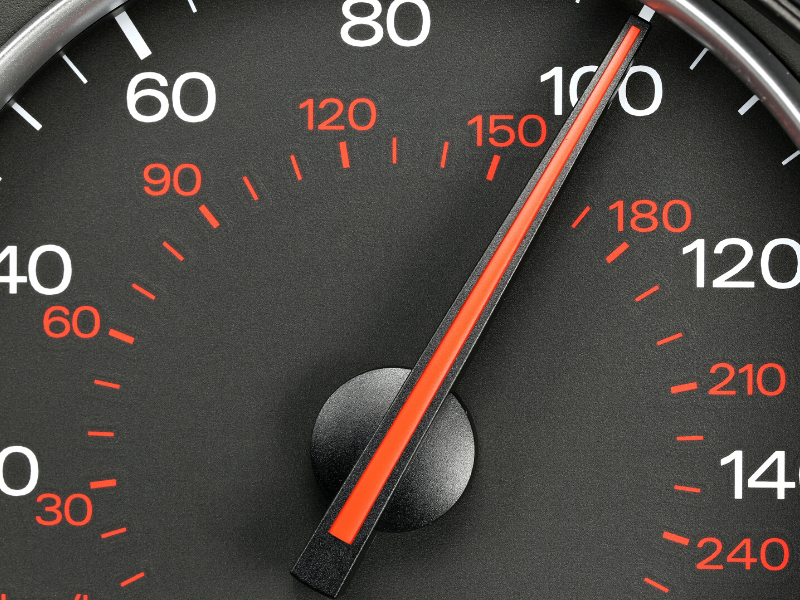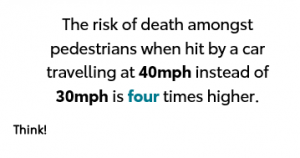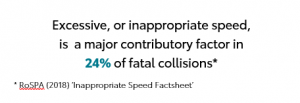11th June 2020
Watch Your Speed!

During lockdown 20 police forces reported offenders travelling at speeds in excess of 100mph and a recent survey revealed that more than four in 10 motorists also think road users have been driving faster during the lockdown period.
As the UK economy prepares to return to work in a post-lockdown environment there will be an increasing number of people who will avoid public transport and stop car sharing while they observe social distancing rules.
With this rise in car usage on our roads, drivers will need to pay even more attention to controlling their speed, in order to avoid being involved in road traffic accidents and incurring speeding fines.
Remember – speed limits are a maximum, not a target, your safe speed will depend on the weather, type of road you’re driving on and vehicle you’re driving.

Speeding is often emotional
For many individuals, choice of speed is simply down to how they feel at that moment but we must recognise that acting on any negative emotions such as time pressure could increase our risk significantly.
Experiencing the anxiety of running late for an appointment is often cited as the main reason for speeding but we all know that it doesn’t really get us there any quicker.
Whatever you think about the situation or the other road users and however frustrated you may feel, you must control your emotions, keep your distance from other road users and drive according to the hazard level and legal speed limit.
- Don’t let your feelings and emotions control you.
- Check your speedometer regularly, especially in an urban environment.
- Keep time on your side – at 30mph by the time you react to a hazard, you will have travelled about 30 ft (9m) or about 2 car lengths.
- Could you live with the guilt if you killed someone?

Top ten tips to stay within the speed limit
- Check your speedometer regularly, especially when leaving higher speed roads
- Know the limits. Look for signs all the time, especially at junctions
- Regularly spaced lights means 30mph or 20mph, unless signs show otherwise
- Remember, speed limits are a maximum, NOT a target!
- 20mph is plenty when children are around – take special care around schools
- Try a lower gear, i.e. 3rd gear in a 30mph zone
- Be aware of what makes you speed – keeping up with traffic, being late, overtaking or being tailgated
- Concentrate – distracted drivers speed
- Slow down when driving through villages – many do not have pathways
- Give yourself plenty of time – there is no need to speed – you won’t get there any quicker but you are likely to stop more often, adding to your frustration.
It’s so important to remember there’s no need to speed, no matter how late or frustrated you are. Speed limits are there to adjust your speed to a safe level, based on the area you’re travelling through, and to protect all road users.